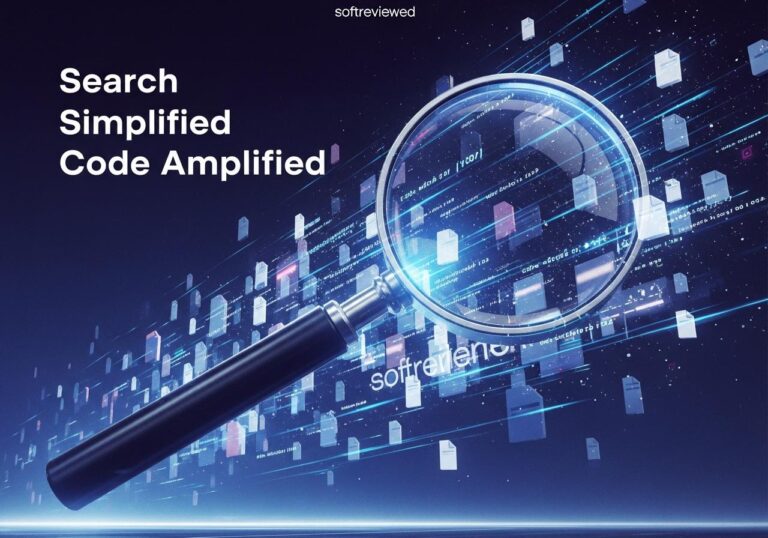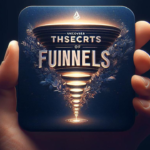AI Revolution in Brain Tumor Diagnostics
How artificial intelligence is transforming non-invasive brain tumor detection and diagnosis with unprecedented accuracy
🎯 99% Accuracy in Non-Surgical Diagnoses
AI models like crossNN achieve near-perfect accuracy for brain tumors using genetic material or cerebrospinal fluid, eliminating the need for invasive surgery.
🔬 Scope Beyond Brain Cancers
CrossNN diagnoses over 170 tumor types across all organs with 97.8% accuracy, expanding cancer detection capabilities beyond traditional brain tumor diagnostics.
💉 Non-Invasive Diagnostic Methods
Validates tumors via cerebrospinal fluid samples or rapid imaging (e.g., stimulated Raman histology), reducing reliance on contrast agents or surgical biopsies.
⚡ Rapid Diagnostic Speed
Models like FastGlioma detect residual tumor tissue in ~10 seconds, accelerating intraoperative decision-making during surgeries.
🧠 Advancements in AI/ML Technology
Combines neural networks, foundation models (e.g., GPT-4 analogs), and epigenetic data analysis to process diverse datasets efficiently.
🏥 Versatile Clinical Applications
Supports treatment planning, prognosis prediction, and cross-cancer outcome analysis, as demonstrated by Harvard’s multi-task AI platform.
Imagine your doctor telling you there's a shadow on your brain scan. The next step is traditionally a high-stakes surgical biopsy, a procedure fraught with risks just to get a diagnosis. Now, what if that diagnosis could be made with near-perfect accuracy from a simple sample of spinal fluid, no surgery required? That's the groundbreaking promise of crossNN, an artificial intelligence model developed by researchers at Charité – Universitätsmedizin Berlin. This remarkable AI analyzes the genetic material of tumors to classify them with an astonishing 99.1% accuracy, heralding a potential revolution in how we detect and fight cancer.
This isn't just about one type of cancer. The technology has demonstrated 97.8% accuracy across more than 170 different tumor types, from the brain to other organs. We’re going to explore how this AI works, why its method is so different from other AI-powered diagnostics, and what this means for the future of patient care. 🚀
When the Cure is as Risky as the Disease
For many patients, the path to a cancer diagnosis is almost as frightening as the disease itself. This is especially true for those with suspected brain tumors in hard-to-reach areas of the brain.
The Perils of Traditional Biopsies
A surgical biopsy involves drilling into the skull and removing a piece of tissue for analysis. The risks are significant, including potential damage to critical brain functions, infection, and bleeding. For a patient who initially sought medical help for something as simple as double vision, learning that a definitive diagnosis requires such an invasive procedure can be a terrifying prospect. It was precisely these kinds of high-risk cases that motivated the Berlin-based research team to find a better way.
A Glimmer of Hope Through Artificial Intelligence
The team's solution bypasses the need for physical tissue samples altogether. Instead, they turned to the genetic traces that tumors leave behind. Their AI model, crossNN, analyzes specific features in this genetic material, which can be obtained from sources like cerebrospinal fluid. This "liquid biopsy" offers a much safer, non-invasive alternative for patients, allowing for rapid and precise tumor classification.
Decoding Cancer's Secret Language: The Power of Epigenetics
To understand how crossNN achieves such high accuracy, we need to look beyond the basic DNA sequence. The magic lies in the field of epigenetics.
Beyond the Genome: What Are Epigenetic Fingerprints?
Think of your genome as a massive library of cookbooks. Epigenetics is the collection of sticky notes and bookmarks that tell the cell which recipes to use and when. These are chemical modifications that act as "on" and "off" switches for genes without changing the DNA itself.
“Hundreds of thousands of epigenetic modifications act as on and off switches for individual gene sections. Their patterns form a unique, unmistakable fingerprint,” explains Dr. Philipp Euskirchen, a scientist at the German Cancer Consortium and the Institute of Neuropathology at Charité, who led the study. In cancer cells, these patterns are altered in very specific, characteristic ways. Just like a real fingerprint, this epigenetic signature is unique to each type of tumor.
From Fluid to Diagnosis: The 'Liquid Biopsy' Approach
Because tumor cells shed their DNA into surrounding fluids, a sample of cerebrospinal fluid (for brain tumors) or blood can contain these unique epigenetic fingerprints. By sequencing the DNA in the fluid, scientists can capture this signature. The challenge is that the amount of data is immense and complex. That's where AI comes in. The crossNN model sifts through hundreds of thousands of data points to find a match against a vast library of known tumor profiles.
Introducing crossNN: The AI Neuropathologist
While using AI in medicine isn't new, the approach and architecture of crossNN set it apart. It was designed to be not only accurate but also simple and explainable, a crucial factor for adoption in clinical settings.
How a Simpler AI Achieves Superior Results
The researchers were surprised by the outcome. “Although the architecture of our AI model is far more simple than previous approaches and therefore remains explainable, it delivers more precise predictions and therefore greater diagnostic certainty,” says Dr. Sören Lukassen, head of the Medical Omics working group at the Berlin Institute of Health at Charité (BIH).
The team trained crossNN using a neural network on a massive dataset of over 8,000 reference tumors. This extensive training allows it to classify tumors even when the data is incomplete or collected using different lab techniques—a common problem in real-world diagnostics.
Putting crossNN to the Test: The Impressive Statistics
The results, published in the journal Nature Cancer, speak for themselves:
- ✅ 99.1% accuracy in diagnosing brain tumors.
- ✅ 97.8% accuracy in classifying over 170 tumor types from all organs.
- ✅ Explainable Decisions: Unlike some "black box" AIs, doctors can understand how crossNN reaches its conclusions.
- ✅ Fast and Efficient: Combined with novel sequencing techniques like nanopore sequencing, a diagnosis can be made promptly, allowing treatment to begin sooner.
A Tale of Two AIs: Epigenetics vs. Image Analysis
It's important to note that crossNN is not the only AI making waves in oncology. Other powerful models have also achieved 99% accuracy in identifying brain tumors. However, their methods are fundamentally different.
| Feature | crossNN (Epigenetic Analysis) | Other AI Models (e.g., MobileNetV2, ResNet) |
|---|---|---|
| Data Source | Genetic material from bodily fluids (liquid biopsy) or tissue. | MRI scans and other medical images. |
| Diagnostic Method | Analyzes DNA methylation patterns (epigenetic fingerprints). | Identifies patterns, shapes, and textures in images. |
| Invasiveness | Potentially non-invasive (via spinal tap or blood draw). | Non-invasive scan, but diagnosis confirmation may still require a surgical biopsy. |
| Key Advantage | Provides a definitive molecular classification without surgery. | Excellent at detecting the presence, size, and location of tumors from standard scans. |
| Underlying Tech | Explainable neural network. | Often deep learning convolutional neural networks (CNNs). |
Both approaches are incredibly valuable and will likely be used in concert. A radiologist might use an image-based AI to spot a tumor on an MRI, and a neuropathologist could then use crossNN to classify it molecularly with a liquid biopsy, guiding the treatment plan with unparalleled precision.
Voices from the Forefront of Medical AI
The experts behind this innovation are optimistic but grounded about its impact.
On Precision and Personalized Medicine
Prof. Martin E. Kreis, Chief Medical Officer at Charité, emphasizes the need for this level of detail in modern medicine. “Against the backdrop of increasingly personalized, rapidly developing cancer medicine, precise diagnosis at a certified tumor center is the way forward for successful treatment,” he stated. Today's targeted therapies work best when the exact molecular profile of a tumor is known.
On Speed, Safety, and Surprise
Dr. Euskirchen shared a powerful real-world example: the patient with double vision. “We examined the cerebrospinal fluid using nanopore sequencing… The classification by our models revealed that it was a lymphoma of the central nervous system, enabling us to promptly initiate appropriate chemotherapy.” This case perfectly illustrates how crossNN can spare a patient a stressful operation while providing a swift, life-changing diagnosis.
The Road Ahead: From Lab to Clinical Reality
A 99% accuracy rate in a study is a monumental achievement, but the ultimate goal is to get this technology into the hands of doctors and to patients worldwide.
The Critical Next Steps: Clinical Trials and Intraoperative Use
The journey isn't over. The research team, in collaboration with the German Cancer Consortium (DKTK), is now planning clinical trials across Germany. This is a crucial step to validate the model's performance in a real-world clinical setting. They are also exploring its use during surgery (intraoperatively), where a rapid DNA analysis could give surgeons real-time information to guide their work.
What Could This Mean for Patients Everywhere?
If these trials are successful, the implications are enormous.
- 📌 Reduced Risk: Patients could avoid dangerous diagnostic surgeries.
- 📌 Faster Answers: Diagnosis could take hours or days, not weeks.
- 📌 Greater Precision: Treatments could be tailored more effectively from the very beginning.
- 📌 Wider Accessibility: The technology is designed to be comparatively inexpensive, which could help democratize access to cutting-edge diagnostics.
A Paradigm Shift in Medical Diagnostics
We are witnessing a profound shift in how medicine approaches cancer. Where we once relied solely on what we could see under a microscope, we can now decode the very instructions that govern a tumor's behavior. Technologies like crossNN move us from a reactive to a predictive and personalized stance on healthcare. It's a future where a simple fluid sample can provide the answers needed to save a life, without ever needing a scalpel. The era of the true "liquid biopsy" may be closer than we think.







